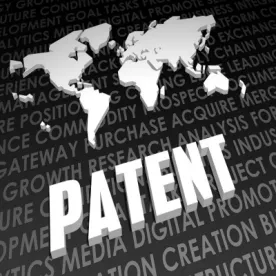On July 6, 2020, in Hunting Titan, Inc. v. Dynaenergetics Europe GMBH, a Precedential Opinion Panel (POP) of the Patent Trial and Appeal Board (PTAB or Board) granted a patent owner’s motion to amend, after the Board denied the motion in an August 2019 Final Written Decision. This was only the fourth such decision since the POP’s creation.[1] The POP relied on the adversarial nature of PTAB proceedings and emphasized that the PTAB will only rarely raise a ground of unpatentability that a petitioner did not advance, and must provide parties adequate notice and opportunity to respond before it issues a decision.
Procedural Background
Petitioner sought to institute an inter partes review (IPR) proceeding based on allegations, among others, that a particular prior art reference anticipated a number of patent claims. The Board instituted the proceeding. Patent Owner filed a motion to amend to replace the challenged patent claims with narrower claims. Petitioner argued unpatentability of the proposed amended claims based on obviousness, not on anticipation. The Board denied the motion to amend, finding that the prior art reference anticipated the amended claims, even though Petitioner had not argued anticipation for the amended claims.
Patent Owner requested rehearing, and also requested review by the Precedential Opinion Panel (POP), arguing, among other things, the PTAB lacked discretion to rule on the motion to amend based on an argument that Petitioner had not advanced. The POP granted the POP request, identifying two questions for resolution:
- Under what circumstances and at what time during an inter partes review may the Board raise a ground of unpatentability that a petitioner did not advance or insufficiently developed against substitute claims proposed in a motion to amend?
- If the Board raises such a ground of unpatentability, whether the Board must provide the parties notice and an opportunity to respond to the ground of unpatentability before the Board makes a final determination.
Petitioner and Patent Owner briefed these issues. Several entities filed amicus curiae briefs. After oral argument but before a written decision, the Court of Appeals for the Federal Circuit issued its opinion in Nike, Inc. v. Adidas AG, holding that the Board may advance a ground of unpatentability that a petitioner does not advance, or insufficiently developed, against substitute claims in a motion to amend. The POP authorized the parties to file supplemental briefs regarding any impact of the Nike decision on the proceeding.
The POP granted the request for rehearing and the motion to amend, saying:
We conclude that the Board may, in certain rare circumstances, raise a ground of unpatentability that a petitioner did not advance, or insufficiently developed, against substitute claims proposed in a motion to amend. We hold, however, that such circumstances are not present in this case and the Board should not have raised its own ground of unpatentability. Moreover, we find that the grounds that were raised by Petitioner in opposition to the Motion to Amend are facially insufficient to support a finding of unpatentability.
The Impact of the Nike Decision on Motions to Amend
The POP emphasized that the Nike decision permitted, but did not require the Board to raise sua sponte a patentability issue for a proposed substitute claim based on the prior art of record.[2] While noting that Nike (citing Aqua Prods., Inc. v. Matal) requires the Board to consider the entire record in determining the patentability of a proposed substitute claim, the POP also stated, “[A]dversarial briefing by the parties provides the basic framework for the amendment process in AIA trials.”[3] The POP went on to state, “[T]he opposition to a motion to amend typically should guide the contours of the motion to amend patentability analysis.”[4]
The Role of the Adversarial Process in AIA Proceedings
Citing US Supreme Court precedent, the POP stated, “Relying on the adversarial process to frame the issues for the Board properly places the incentives on the parties to identify the pertinent evidence and make the best arguments for their desired outcome.”[5] Petitioner had argued that the Board should raise sua sponte any potential arguments of unpatentability in every case involving a motion to amend. The POP held that this approach would undermine the efficiency of AIA proceedings, putting the burden on the Board to develop the petitioner’s case.[6]
The POP recognized that there could be rare circumstances in which either a petitioner ceases to participate in the proceeding, or the petitioner chooses not to oppose a motion to amend. In addition, there may be circumstances in which a petitioner does not raise certain evidence of unpatentability, but that evidence nonetheless is readily identifiable and persuasive. The POP saw these situations as fact-specific, and manageable on a case by case basis.[7]
The Notice Requirement in Administrative (AIA) Proceedings
In this case, the parties did not dispute the requirement for notice when the Board raises sua sponte a ground of unpatentability in a proceeding. The POP cited Nike again, for two concepts: first, that the requirement applies to a ground of unpatentability that the Board raises with respect to proposed substitute claims in a motion to amend; and second, that the Board must provide notice of its intent to rely on particular references, and an opportunity for the parties to respond before issuing a final decision relying on those references.[8]
The parties disputed the form that that notice must take. Here, Petitioner argued that grounds in a petition are sufficient notice to enable the Board to apply the same ground against substitute claims. The POP disagreed. By definition, substitute claims include limitations not present in originally-challenged claims. Adopting the petitioner’s approach would require a patent owner to guess as to unpatentability grounds for the substitute claims, and would relieve petitioner of the responsibility of identifying the grounds that it believes have merit.
The POP held, “[D]ue process requires that a patent owner receive notice of how the prior art allegedly discloses the newly-added limitations of each proposed substitute claim, as well as a theory of unpatentability asserted against those claims. And the patent owner must have the opportunity to respond to those factual allegations and legal theories.”[9] Citing Nike again, the POP noted two examples of such an opportunity: supplemental briefing regarding the Board’s proposed ground for unpatentability; or allowing the parties to prepare to discuss the matter at oral hearing.[10]
In the present case, in the Final Written Decision denying the motion to amend, the Board held that a reference anticipated the proposed substitute claims. However, in opposing the motion to amend, the petitioner relied on obviousness over the same reference, rather than on anticipation. The Board addressed only anticipation, not obviousness.
The POP found that the petitioner had not advanced, much less sufficiently developed the anticipation theory that the Board discussed in the Final Written Decision. At oral hearing, Petitioner said that it focused on obviousness and not anticipation because of “a small window of opportunity to make what we think are strong arguments”,[11] as an intentional “tactical decision, to focus our arguments in the limited space we had”.[12]
Further, the POP found that the Board should not have raised the anticipation ground in the Final Written Decision. The POP distinguished the examination aspects of, for example, ex parte reexamination to an inter partes proceeding. The POP said, “The two systems should not be mixed within a single proceeding.” [13] The POP also noted the petitioner’s strategic choice to oppose the motion to amend on different grounds (obviousness) from the one on which the Board relied in the Final Written Decision (anticipation). In addition, the POP stated:
The public interest is not well-served by the Office filling in gaps intentionally left void by IPR petitioners. To the contrary, doing so would reduce incentives for petitioners to bring out the best arguments and would in the long run reduce the integrity of the patent system. The public interest is best served by the Office acting with humility and restraint, and deferring to those who come before the Board in these adversarial proceedings, who have the most at stake, and who surely know the record best.[14]
The POP also held that, even if the Board should have raised anticipation sua sponte as a basis for finding the proposed amended claims unpatentable, the analysis of the issue in the Final Written Decision “was not based on a fulsome development of the issue by the parties”.[15]
Finally, the POP found that the petitioner’s obviousness arguments failed to present a reason to combine or modify the prior art, but merely presented how one or more of various prior art references discloses limitations of the proposed substitute claims. The POP found that the petitioner did not provide a persuasive theory of obviousness. Accordingly, the POP granted the motion to amend.
Takeaways
-
It is the petitioner’s job to frame the issues in an adversarial AIA proceeding, not only in a petition but also in opposing a motion to amend. Just as the initial petition frames a proceeding in terms of the claims being challenged, an opposition to a motion to amend frames the issues in terms of the proposed substitute claims.
-
The adversarial nature of an AIA proceeding means that arguments and evidence between the petitioner and the patent owner almost always determine the framework for the Board’s final written decision. A petitioner’s strategic decisions, even if based on critical issues such as space limitations, can affect the outcome. If space limitations truly appear to be an issue in opposing a motion to amend, the petitioner should seriously consider requesting additional space.
-
Estoppel under 35 U.S.C. § 315(e) provides another reason for the petitioner to raise all possible issues in opposing a motion to amend. Making a strategic decision not to make a particular argument that otherwise is available will prevent the petitioner from raising that same argument after the proceeding is over.
[1] Typically, the USPTO Director, the Commissioner for Patents, and the Chief Administrative Patent Judge form the POP.
[2] IPR2018-00600, Paper 67 at 10.
[3] IPR2018-00600, Paper 67 at 11.
[4] Id.
[5] Id. (citing Greenlaw v. United States, 554 U.S. 237, 243-44 (2008)).
[6] Id. at 12.
[7] Id. at 12-13.
[8] Id. at 14 (citing Nike, 955 F.3d at 51-52).
[9] Id. at 15.
[10] Id. at 15-16 (citing Nike, 955 F.3d at 54).
[11] Id., Paper 63 at 16.
[12] Id. at 17.
[13] Id. at 19.
[14] Id. at 20.
[15] Id. at 22 (emphasis in original).




 />i
/>i

